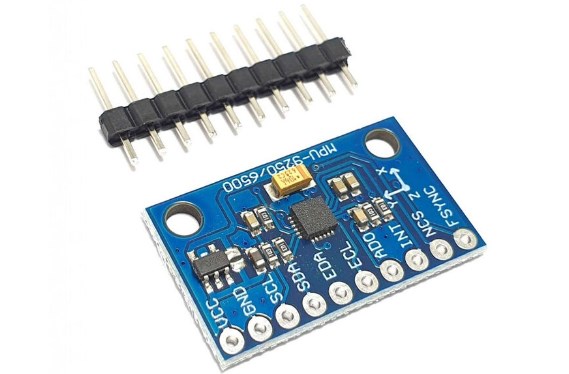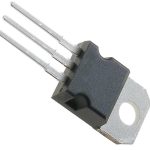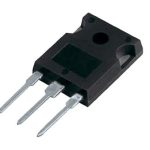The MPU9250 is an incredibly versatile and powerful sensor that has revolutionized the field of motion tracking and sensing. With its compact size and advanced capabilities, it has become a popular choice among engineers, hobbyists, and researchers alike. This guide aims to provide a comprehensive overview of the MPU9250 sensor, discussing its features and how to effectively utilize its capabilities.
What is MPU9250?
The MPU9250 is a highly integrated 9-axis motion tracking device that combines a 3-axis accelerometer, a 3-axis gyroscope, and a 3-axis magnetometer in a single package. It is developed by InvenSense (now part of TDK) and has gained popularity for its accuracy and versatility.
How does MPU9250 work?
The MPU9250 utilizes microelectromechanical system (MEMS) technology to measure motion and orientation. The accelerometer detects changes in acceleration along three axes, allowing it to measure linear motion. The gyroscope measures angular velocity, providing information about rotational movement. The magnetometer detects changes in magnetic fields, enabling the determination of orientation relative to the Earth’s magnetic field.
What is MPU9250 used for?
The MPU9250 is used in various applications that require precise motion tracking, orientation sensing, and magnetic field detection. Some common applications include drone stabilization, robotics, virtual reality headsets, gaming controllers, and motion capture systems. Its compact size and integration of multiple sensors make it an ideal choice for projects that demand accurate measurement of motion and orientation.
What is the advantage of MPU-9250?
One of the main advantages of the MPU-9250 is its integration of multiple sensors into a single package. This eliminates the need for separate components and simplifies the design process.
Additionally, the MPU-9250 offers high accuracy and reliability, making it suitable for demanding applications. Its ability to measure motion, orientation, and magnetic fields in one device provides a comprehensive solution for many electronic projects.

Features
- 9-axis motion tracking: Includes a 3-axis accelerometer, a 3-axis gyroscope, and a 3-axis magnetometer.
- Integrated digital motion processor (DMP): Provides on-chip motion processing algorithms, reducing the processing load on the host microcontroller.
- Digital output: The MPU9250 communicates with the host device using I2C or SPI interface protocols.
- Programmable features: Allows customization of sensor parameters, such as data output rates and filtering options.
- Low power consumption: The MPU9250 has power-saving features, including programmable sleep modes and low-power operation.
- Wide operating voltage range: Supports a voltage range from 2.4V to 3.6V, making it compatible with various power sources.
Price
The price of the MPU-9250 can vary depending on the supplier, quantity purchased, and additional features offered. On average, the MPU-9250 module can be found for around $10 to $20 USD.
Datasheet
You can click here to get the MPU9250 datasheet now!
Comparison
MPU 6000 vs MPU 6050
The MPU-6000 and MPU-6050 are often confused due to their similar names. However, they are distinct transducers with different capabilities. The MPU-6000 is a 3-axis accelerometer and gyroscope sensor, while the MPU-6050 combines the same 3-axis accelerometer and gyroscope with an additional temperature sensor. This added feature makes the MPU-6050 ideal for applications that require temperature compensation.
MPU 6000 vs MPU9250
Moving on to the comparison between the MPU-6000 and MPU-9250, we find that both transducers offer a similar set of features, including a 3-axis accelerometer and gyroscope. However, the MPU-9250 takes it a step further by integrating a 3-axis magnetometer as well. This magnetometer enhances the MPU-9250’s ability to measure orientation and provides valuable data for applications such as compass navigation.
How to use an MPU9250?
To use the MPU9250, you need to connect it to a microcontroller or development board, such as Arduino, Raspberry Pi, or STM32. The MPU9250 communicates with the host device through I2C or SPI interfaces. You will need to read the datasheet or reference manual to understand the specific pin connections and communication protocol details.
Once connected, you can configure the MPU9250 by writing the appropriate settings to its registers. This includes setting the desired data output rates, sensor ranges, and filter settings. After configuration, you can read the sensor data from the appropriate registers and perform further processing or analysis.
How to use MPU-9250 with Arduino?
Using the MPU-9250 with Arduino is relatively straightforward.
- First, connect the MPU-9250 module to the Arduino board using jumper wires. Make sure to connect the SDA and SCL pins of the MPU-9250 to the corresponding pins on the Arduino (usually A4 and A5, respectively).
- Next, install the necessary libraries for interfacing with the MPU-9250. There are several libraries available, such as “MPU9250” or “SparkFun MPU-9250.” You can install these libraries using the Arduino Library Manager.
- Once the library is installed, you can use example codes provided by the library to get started. These examples demonstrate how to initialize the MPU-9250, read sensor data, and perform basic calculations on the data.
By modifying and expanding upon these examples, you can develop your own projects using the MPU-9250 with Arduino.
FAQs
Is MPU-9250 good?
Yes, the MPU-9250 is highly regarded for its accuracy and reliability in measuring motion, orientation, and magnetic fields. Its robust design makes it suitable for various applications ranging from gaming to drone stabilization.
Is MPU-9250 discontinued?
No, the MPU-9250 is still widely available in the market and continues to be actively used in numerous electronic projects. Its popularity can be attributed to its excellent performance and versatility.
Is MPU9250 an IMU?
Yes, the MPU-9250 can be classified as an IMU due to its ability to measure acceleration, angular velocity, and magnetic fields. It provides a comprehensive solution for motion tracking and orientation sensing.
What is the resolution of MPU9250?
The MPU-9250 offers a resolution of up to 16 bits for its accelerometer and gyroscope sensors. This high resolution enables precise measurements and accurate motion tracking.
What is the working principle of MPU9250?
The MPU-9250 operates based on microelectromechanical system (MEMS) technology. It utilizes microscopic structures such as accelerometers and gyroscopes to detect changes in acceleration and angular velocity, respectively. Additionally, the integrated magnetometer detects changes in magnetic fields to provide orientation data.
Conclusion
MPU9250 sensor is a remarkable tool that opens up a world of possibilities in motion tracking and sensing. Its ability to accurately measure acceleration, rotation, and magnetic fields makes it an invaluable asset in various applications, ranging from robotics to virtual reality. By understanding its features and harnessing its power, you can unlock new realms of innovation and take your projects to the next level.



